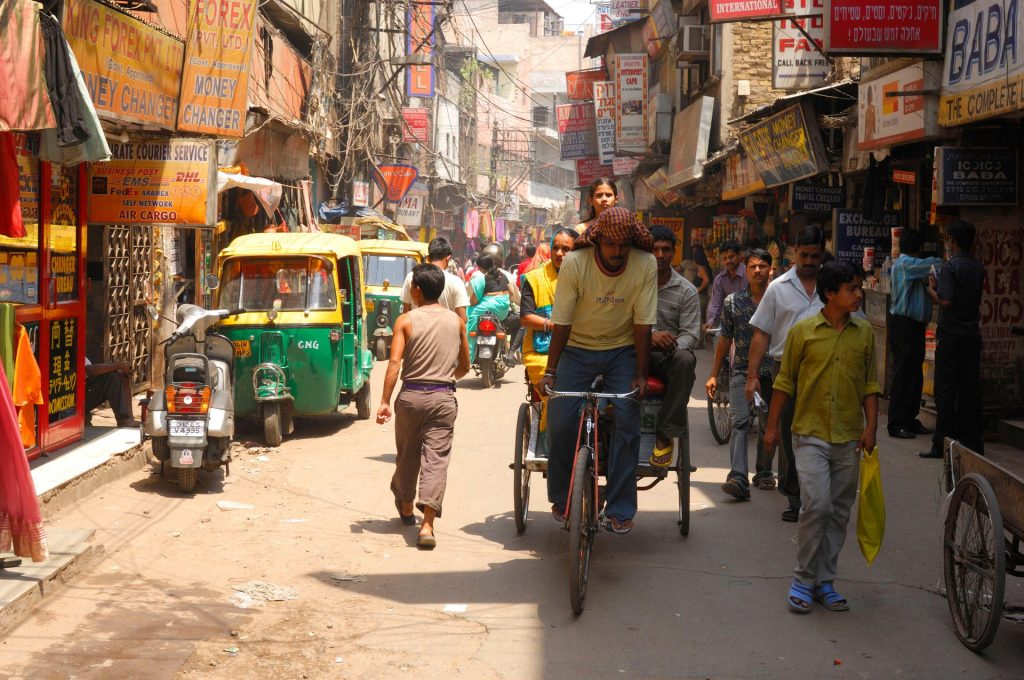The digital revolution arrives in remote Indian villages such as Akbarpur by communication methods old and new: a WhatsApp message buzzes through to the village chief; he notifies his fellows via megaphone.
The world’s biggest biometric ID programme is coming to town.
The next day, two men arrive at the village in Palwal district, Haryana state, with devices the residents have never seen: an iris scanner, a fingerprint machine, a camera and laptop. They are here to register the people of Akbarpur.
The officials set up an enrolment centre at the village chief’s house. For three days, queues snake around the courtyard. Some of those who come are afraid the iris scanner will hurt their eyes; others do not understand why they need to be enrolled.
“They took our fingerprints and they used that machine for your eyes. The villagers didn’t know what was going on in the beginning,” says Mukesh Maindhwal, Akbarpur’s new chief.
The Aadhaar scheme was launched in 2009, under former prime minister Manmohan Singh, but the current government, led by Narendra Modi, is credited with rolling it out across India. According to the latest figures in May 2016 from the Unique Identification Authority, more than a billion people have been given Aadhaar numbers. Within the next few months, the details of every person in India will be in the government database.
The government’s task is enormous. India’s 1.25 billion population is second in size only to China. Hundreds of officials have been enlisted to go out to register people and give them a unique identification number, which will be linked to their biometric data.

Photograph: Money Sharma/AFP/Getty Images
ID programmes the world over trigger warnings from privacy advocates and those who are sceptical of government ability to keep data safe from hackers and criminal elements. But those arguments grip less in India, where the need to modernise government administration is urgent.
Currently, many welfare schemes are run by individual states, often allowing corruption and fraud at the local level. The national database will allow the central government to take stock of the population’s needs in various parts of the country and provide services accordingly.
Dr Ajay Bhushan Pandey, director general of the Unique Identification Authority, says the programme will transform India. “Each person will be given a biometric non-duplicable ID. This kind of exercise has never been attempted on this scale anywhere. If a person wants to access any government service, they will need to use their Aadhaar number.
“The Indian parliament passed a law in March with provisions to ensure that Aadhaar data is protected and that any violation of privacy amounts to a criminal act, and bears a minimum jail sentence of three years.”
The data collected by the Aadhaar centres will be stored in a network of servers in the southern city of Bangalore. Information from the database can then be circulated to different authorities. The ID system, according to the government, will prevent welfare fraud and ensure subsidies and social security schemes are reaching the right people. Millions of people under the scheme will also get access to bank accounts for the first time.
Some officials have had to travel through deserts and forests to find remote villages that are still off the grid to take the iris scans and fingerprint data of just a handful of residents. Others run Aadhaar camps in schools or workplaces, where hundreds of people can be registered in a day. In some states, hospitals have started issuing Aadhaar numbers so babies are enrolled within minutes of being born.

Photograph: Alamy
Akhil Sharma, the government official who runs the WhatsApp group in Haryana, is in charge of sending field operators to various parts of the state. “We have an online portal where people can send requests for enrolment,” he says. “Even rural people know now that they need to be enrolled. We get requests from all over the place, and daily data keeps coming in, even from villages where there is no internet. I don’t know how they find a way to get online, maybe they go to the nearest towns, but we get data from all over the place.”
Field operators are dispatched from hubs in cities. Govind Singh Rawat has run registration drives and door-to-door campaigns around the capital, Delhi, for two years. In that time, he has registered about 250,000 people. “Many people, especially elderly people who are 95 or older, don’t understand why they need this. They say, ‘We have lived all our lives without all this, why do we need to register now?’”
Rawat says the Aadhaar programme’s ambition can sometimes become a weakness. “Many of us field staff get beaten up by people, who ask us why we’re not working faster. When we set up registration centres, sometimes there are long queues and people have to wait for hours. They think we are being slow and inefficient.
“We try to explain to them that the machines take a certain amount of time to process each person’s data, and we can’t work any faster than that.”

